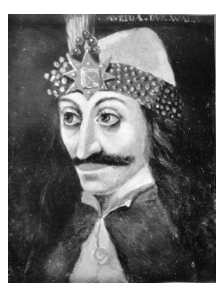In April 2006, after suffering for months from a feeling of exhaustion that often attacks me when I have spent too long in one of those cities immortalized in novels and films, I boarded a train departing from the Paris Est station with the hope that a trip would revitalize me. I could not help but reflect as I lay down in the narrow frame of my sleeper cabin that I was headed for a place I knew nothing about, seduced by some fantasy of Eastern innocence derived from an out-of-date guidebook. After a short stay in Vienna, I arrived in Sighisoara, Romania, a tiny town in the foothills of the Carpathian Mountains. My first impression was of reaching a place that had dropped out of the stream of history some decades back, forgotten by Europe’s progress and decay. The platform I descended to from the train was little more than a few cement blocks strewn alongside the track, while an unattended wooden booth nearby constituted what I supposed to be the station. Before leaving Paris I had made a reservation with the Elen Villa Hostel on Libertatii Street—a simple house a few blocks from the station—but I was profoundly relieved to find that the old couple who ran the establishment not only spoke virtually no French or English, but were unaware of my reservation, though the hostel’s complete vacancy made this point irrelevant. In any case, I was prepared for this kind of deficiency. An article in a guidebook to Eastern Europe from 1998—the source of my original attraction to Sighisoara—had warned that the area would lack the usual trappings of tourist destinations. Transylvania, it read, that region in Romania of which Sighisoara is a principal attraction, offers the traveler dark, mist-shrouded hills and startlingly preserved medieval towns, but is also characterized by unreliable transportation, rampant inflation, and occasional danger from rabid dogs. As I walked on that first morning through the town, whose cobblestone streets were lined by low, squat houses with tiled roofs, while horse-drawn carts creaked by me as often as coughing Soviet-era cars, and crowds of youths lounged against the lower walls of the citadel at the heart of the town, sporting spiked hair and tracksuits emblazoned with the insignias of exotic sports teams, while the dark spires of a medieval clock tower loomed above us all, awaiting the turning of the hour, when its miniature, painted wooden figurines would execute a tiny, lifeless dance, it was easy to imagine that I was the only foreigner in Sighisoara. At least those were my thoughts as I climbed the...
You have reached your article limit
Sign up for a digital subscription and continue reading all new issues, plus our entire archives, for just $1.50/month.
Already a subscriber? Sign in





